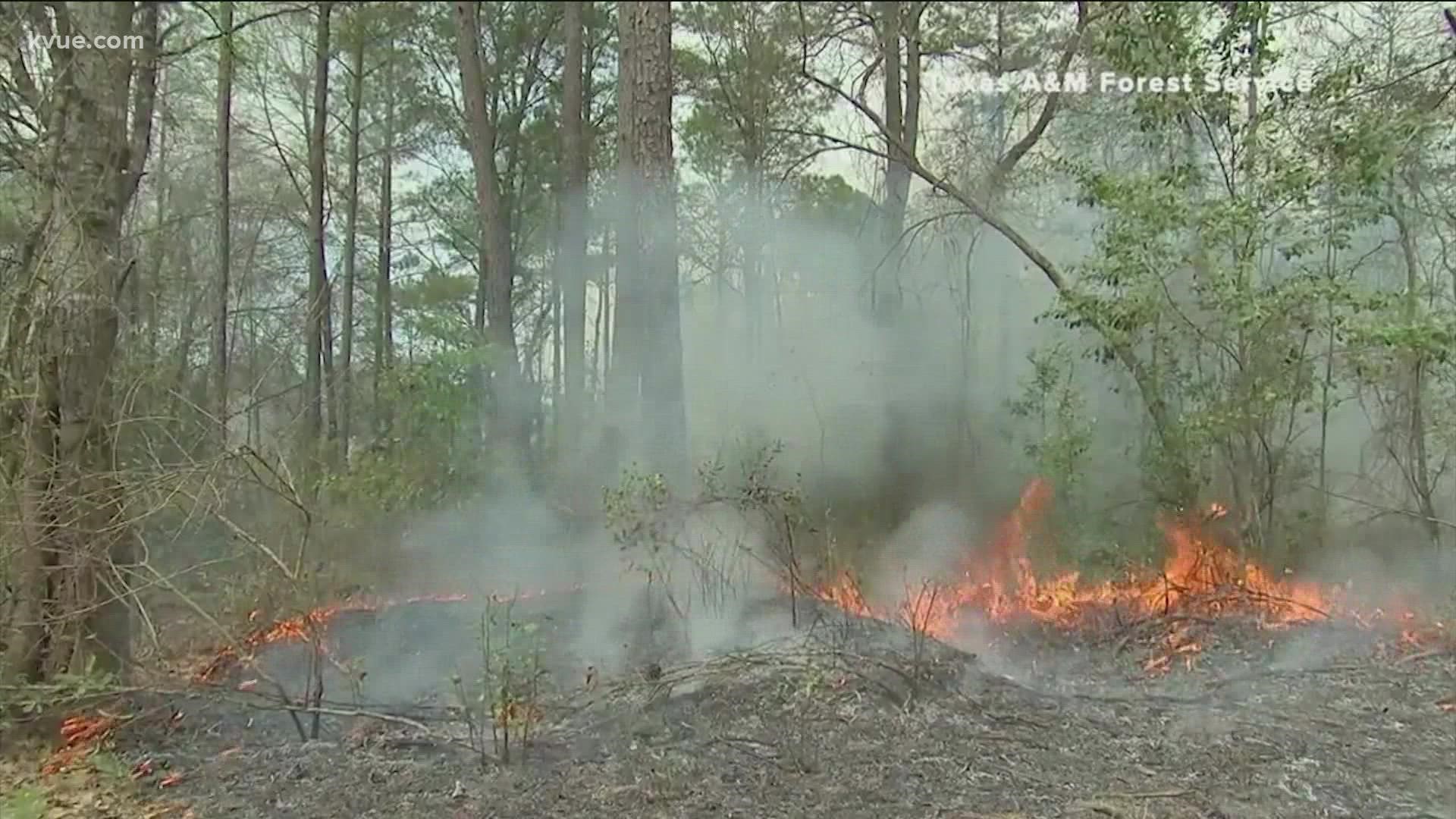BASTROP COUNTY, Texas — Setting fire to woodlands and brushland has long been an accepted practice in forest management in an effort to prevent future unwanted wildfires.
The U.S Forest Service cites a number of reasons of why it’s a good practice:
- To clear out underbrush that can fuel a fire
- To add nutrients to the soil
- To promote the growth of trees, wildflowers and other plants
But ever so often, planned or prescribed burns get out of control.
That was the case in the summer of 2017 when a controlled burn along Onion Creek near Buda spread rapidly and threatened some homes. Austin firefighters were eventually able to contain the blaze before any property was damaged.
The U.S. Forest Service conducted a study of prescribed burns several years ago and found three common reasons firefighters lost control of the flames:
- Starting a controlled burn during a drought
- Poor communications among firefighters
- Underestimating the amount of fuel such as brush and debris on the forest floor
The Texas Parks and Wildlife Department announced Wednesday that they had appointed an independent panel to investigate how the prescribed burn that developed into the Rolling Pines fire in Bastrop County got out of control. Nearly 800 acres burned and evacuations were ordered last week when flames began threatening homes.
Bastrop officials want to know why the burn took place even though the forest service warned about increased wildfire danger the day the fire was started.
RELATED COVERAGE:
- Rolling Pines fire: Officials announce panel investigating why prescribed burn in Bastrop lost control
- Bastrop County fire 100% contained after burning more than 800 acres
- Burn ban, disaster declaration issued for Bastrop County following wildfire
- Bastrop’s Rolling Pines fire puts sharp focus on, raises questions about prescribed burns

